Content
Few gardens are complete without a blackcurrant bush. Tasty and healthy berries of early ripening, like the Selechenskaya and Selechenskaya 2 currant varieties, are valued for the presence of vitamins and microelements. The culture is undemanding in care, frost-resistant, grows well in the regions of most of Russia, Belarus, and Ukraine.
History of creation
Selechenskaya currant has been included in the State Register since 1993. Its author A.I. Astakhov, scientist from Bryansk. The early ripening variety quickly gained popularity among gardeners. But due to the increased demands of currants on soil quality and susceptibility to diseases, the breeder continued to work on the crop. And since 2004, the collection of Russian blackcurrant varieties has been enriched with another acquisition. Black currant Selechenskaya 2 was developed in collaboration with L.I. Zueva. Both varieties produce early fruits that have a delicate and sweet dessert taste, but differ sharply in other indicators. Gardeners continue to grow them successfully in different regions of Russia.
Comparative characteristics
Farmers prefer to plant blackcurrant bushes on plantations, adapted to local climatic conditions.Both currant varieties fully meet these requirements. Harvesting takes place from July to the second ten days of August. In terms of harmony of taste and usefulness, aromatic plants differ little.
Currant Selechenskaya
Thanks to the winter hardiness of the bush - up to -32 0C, drought resistance, early ripening and yield, Selechenskaya black currant is grown from the northwestern regions to Siberia. A medium-sized bush with straight, medium-thick, non-spreading shoots, grows up to 1.5 m. The five-lobed leaves are small, matte. There are 8-12 light flowers in the brush. The round berries weigh from 1.7 to 3.3 g and are covered with soft black skin. Sweet and sour, contain 7.8% sugar and 182 mg of vitamin C. Tasters rated the taste of Selechenskaya currants at 4.9 points. The berries are easy to pick from the bunch, ripen together, do not fall off, and stay on the bush.
From one bush, starting in mid-June, 2.5 kg of fragrant berries are collected. On an industrial scale, the variety shows a yield of 99 c/ha. Sweet and sour berries are not astringent; they are consumed fresh, for various preparations and freezing. They will keep in the refrigerator for 10-12 days.
The bush is immune to powdery mildew and has average sensitivity to anthracnose. For other fungal diseases, preventive treatment is necessary. The black currant variety Selechenskaya has a high susceptibility to bud mite.
Currants require care:
- Prefers fertile soil;
- Loves shaded places;
- Needs regular watering;
- Sensitive to fertilizing;
- Without following agricultural practices, the berries become small.
Currant Selechenskaya 2
The improved variety has also spread widely over the years.A compact bush with straight shoots rises to 1.9 m. The leaves are medium-sized, dark green, three-lobed. The raceme contains 8-14 purple flowers. Round black berries weighing 4-6 g. The Selechenskaya 2 black currant bush produces up to 4 kg of fruit. Berries with a characteristic aroma, pleasant, rich taste, without pronounced astringency. They contain 7.3% sugar and 160 mg of vitamin C per 100 g of product. Tasting score: 4.9 points.
The berries come off the branch dry and are transportable. The bush bears fruit for a long time, the berries do not fall off. Black currant Selechenskaya 2 is cold-resistant, but 45% of the flowers suffer from recurrent spring frosts. The bushes of the variety are unpretentious, grow in the shade, are highly resistant to powdery mildew, and show average susceptibility to anthracnose, bud mites and aphids. Spring preventive treatment is enough for the season.
From the description it is clear how the Selechenskaya and Selechenskaya 2 currants differ.
- First of all, the yield has increased due to the enlargement of the berries;
- Having become less demanding of soil and care, the new variety has lost its resistance to sudden spring temperature changes;
- The improved plant is less susceptible to fungal pathogens.
Reproduction
Black currant Selechenskaya is propagated by layering and cuttings, like all other varieties of this berry bush.
By layering
Near a bush with long shoots, small holes are dug in the spring.
- Large annual shoots are tilted towards the depressions and covered with soil;
- The branch is strengthened with special spacers or improvised material so that it does not straighten;
- Layers are watered regularly;
- Shoots that have taken root are covered with soil;
- Seedlings can be moved in the fall or next spring.
Cuttings
Selechenskaya and Selechenskaya 2 blackcurrant cuttings are prepared in the fall or at the end of winter from woody annual shoots, 0.5-1 cm thick. The rooting process lasts up to 1.5 months.
- Each piece of currant branch should have 3 eyes;
- Cuttings are treated with growth stimulants in accordance with the instructions;
- Planted in separate containers in loose fertile soil. The lower bud is buried;
- Organize a mini-greenhouse by covering the containers with film or a transparent box. The seedlings are ventilated every day.
Growing
To successfully grow Selechenskaya blackcurrant, you need to carefully select seedlings.
- 1- or 2-year-old healthy, resilient seedlings without visible damage are suitable;
- Shoots from 40 cm in height and up to 8-10 mm in diameter at the base, with smooth bark and not withered leaves;
- The roots are dense, with two or three skeletal branches up to 15-20 cm, not dried out;
- If the seedlings are spring, they have swollen, large buds.
Site preparation
Currant Selechenskaya 2 grows well in partial shade and develops best in a place protected from strong air currents. The crop is planted along fences, buildings, on the south or west side of the garden. Loves neutral or low acidity soils. The distance to groundwater should be at least 1 m.
- Before planting the Selechenskaya black currant variety, the plot is fertilized 3 months in advance with humus, potassium sulfate or wood ash and superphosphate;
- If the soil reaction is acidic, apply per 1 square meter. m 1 kg of dolomite flour or lime.
Landing
Selechenskaya 2 currant bushes are placed 1.5-2 m from each other.
- If a cutting is planted, or the soil is heavy, then the seedling is arranged so that it is inclined at an angle of 45 degrees to the ground;
- The hole is filled in and compacted. Sides are made around the perimeter so that when watering, water does not leak beyond the projection of the hole;
- 20 liters of water are poured into the created bowl around the seedling and mulched.
Care
Blackcurrant bushes Selechenskaya and Selechenskaya 2 need regular watering, especially in the third year, at the beginning of fruiting. Then the soil is loosened no deeper than 7 cm, removing all weeds.
- Typically, plants are watered 1-2 times a week or more often, based on the amount of natural precipitation, 1-3 buckets;
- Watering is increased in the ovary phase, after harvesting and before the onset of frost, no later than the beginning of October.
Care involves mandatory covering of young bushes for the winter.
Top dressing
Currant Selechenskaya and Selechenskaya 2 need timely feeding.
- In spring and autumn, the bushes are fed with a mullein solution diluted 1:4, or 100 g of bird droppings are diluted in 10 liters of water;
- In the 3rd year of growth, add 30 g of urea in the spring, and humus or compost to the mulch;
- In October, 30 g of superphosphate and 20 g of potassium sulfate are given to the bushes. Mulch with humus;
- If the soils are fertile, you can refuse autumn mineral products by adding 300-400 g of wood ash under the bush.
Trimming
By forming a Selechenskaya 2 currant bush in spring or autumn, gardeners lay down the future harvest, which is created on shoots that take 2 or 3 years.
- Every year 10-20 zero shoots grow from the root, which become skeletal branches after a season;
- In the 2nd year of growth, 5-6 branches are left;
- To form branches, the tops of young shoots are pinched in July;
- In autumn, the branches are pruned in front of the outer bud by 3-4 eyes;
- Branches that are older than 5 years, dry and diseased are cut out.
Bushes of northern dessert fruits, shimmering in the summer with the black satin of ripe berries, will delight garden owners for a long time if they pay attention and love working on the land.
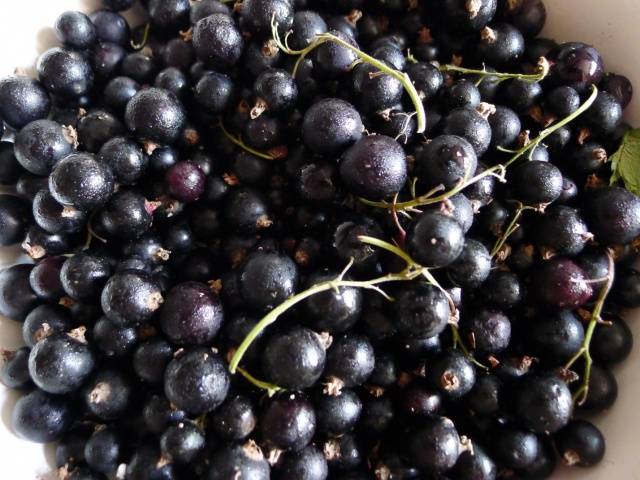
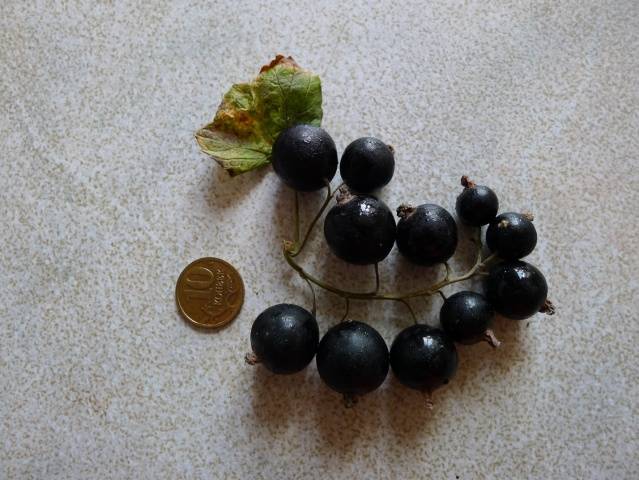
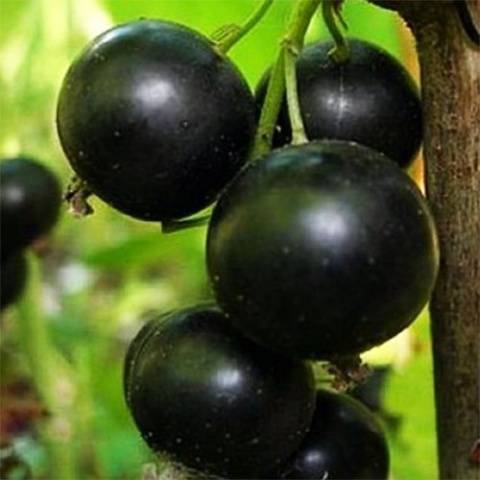
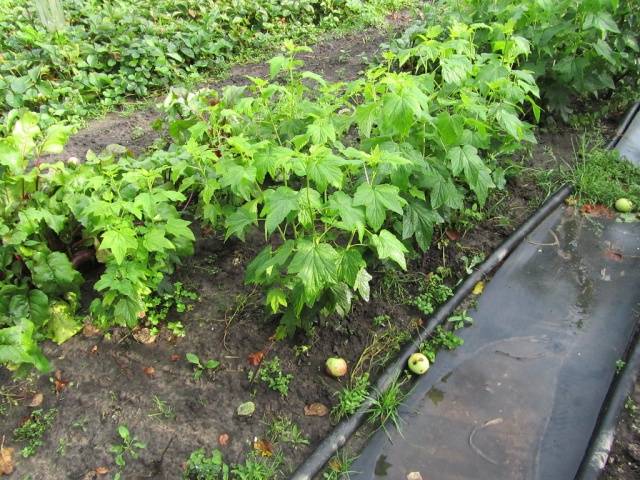
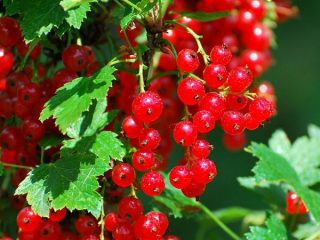
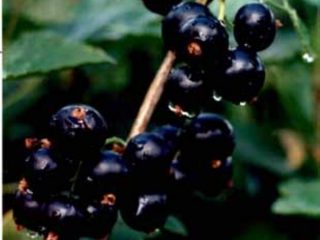

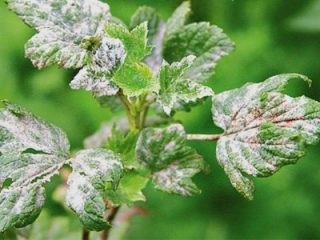
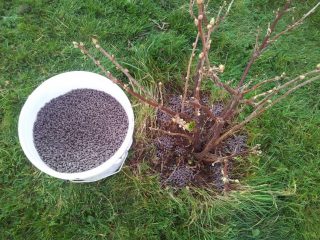
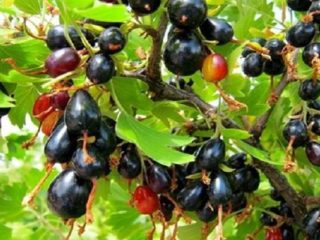
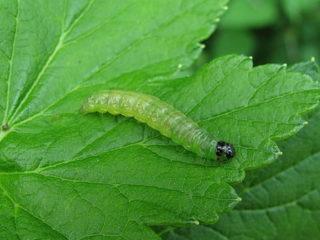


I apologize, I found in the test that 43% are affected by frost. My flowers froze below zero. Selechenskaya-2.
Lipetsk.
The mega-disadvantage is not indicated - the flowers do not tolerate return frosts.!!! And it blooms just at this time. Latitude - Lipetsk. It blooms thickly, after flowering it is empty, absolutely empty. If it happens again in the third year, I’ll uproot the hell out of it.
Somewhere further south it will go.
Aphids hardly settle, but powdery mildew loves them very much. Needs to be processed constantly. Before flowering with systemic preparations, after flowering with biological preparations.